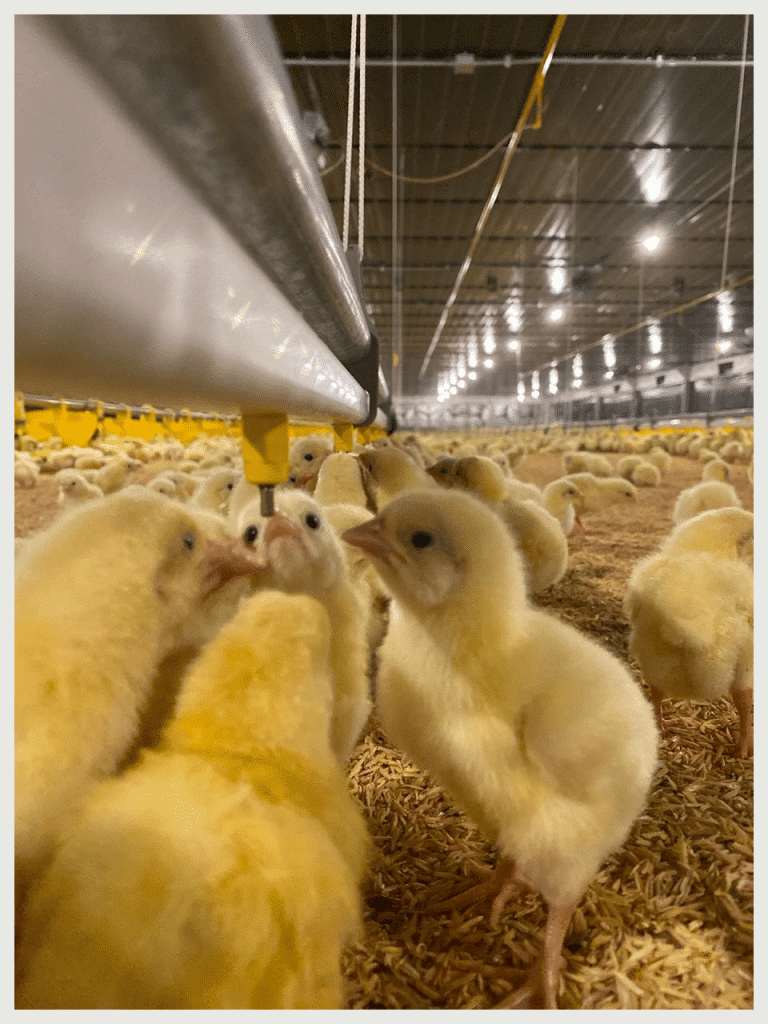
A properly designed environmental control system is a high priority in today’s poultry houses. The system must maintain the correct temperature, humidity, and air velocity while minimizing noxious gases to create optimum conditions and results. Keep in mind, the optimal settings for these parameters will change throughout a bird’s life.
Designing and operating an environmental control system can sound quite complex, but can be simplified with an example. Most people are familiar with the heating and air systems that we use in buildings. These systems have a thermostat where a certain temperature which we want to maintain inside the building can be set. If the room temperature is below the set temperature, the heat turns on to increase the temperature. If the room temperature is above the set temperature, the air turns on to decrease the temperature. The system can be changed depending on the time of year, occupants, and desired level of comfort.
For day-old chicks, the optimum indoor temperature is critical. Young chicks cannot regulate their body temperature, so an external heat source is needed. If the indoor temperature deviates excessively, the mortality rate will rise significantly. Temperature deviations can also have negative consequences later in the production cycle, including lower weight and increased FCR (feed conversion ratio).
Other factors must also be taken into consideration when referring to temperature, as this can mean two different things: room temperature and ambient or “sensed” temperature. Room temperature refers to the reading on the thermometer, while sensed temperature is dependent on the air temperature plus other factors such as humidity and air velocity.
Air velocity has the opposite effect as humidity. If the air velocity is increased, the birds sense a lower temperature even though the room temperature is unchanged. This is referred to as chill effect or chill factor. The chill effect fluctuates with age and temperature. For market age broilers, an air velocity of 200 ft/min will cool the birds approx. 4°F. For 4-week-old broilers, the effect is stronger, with the same air velocity of 200 ft/min having a cooling effect of approx. 7.5°F
Understanding and regulating the temperature, humidity, and air velocity is a great start to creating a productive poultry operation. The grower must also notice other factors, such as light intensity and bird distribution, that can influence the results. When choosing an environmental control system, it is important to choose a system which – with due consideration of the local climatic conditions – provides good possibilities of controlling temperature, humidity, and air velocity to maintain uniform production.